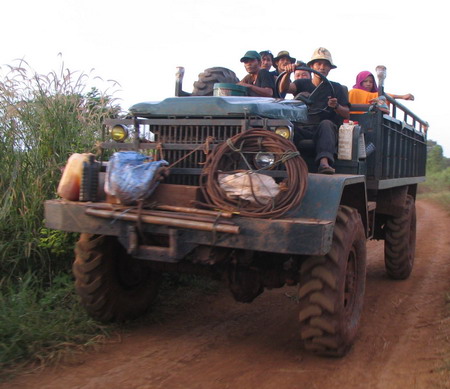

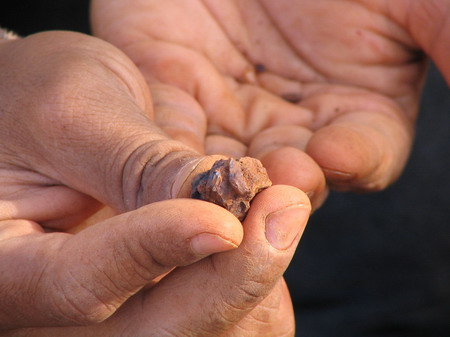
The plan for today is to again go on a trip with great guides Lim and Lot, this time on a loop from Banlung to the east and south. We travel by motorbike and visit Ou’Sean Lair Waterfall and the Bokeo mines in the Ou Ya Dav area (hope I got it right).
If you require a guide in Rattanakiri just call Lim: 012517418.
30.10.2005

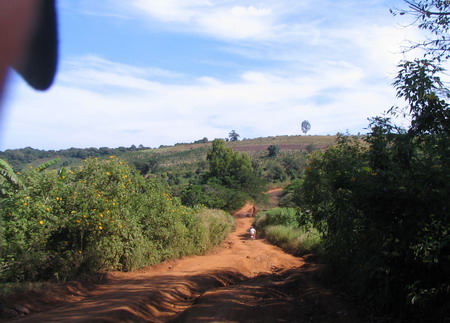
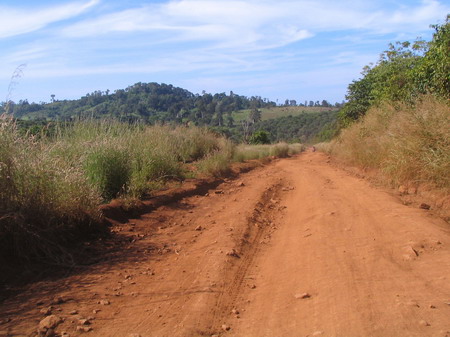
These are rubber tree plantations.


We stop briefly to fix the bike. This is Lim.
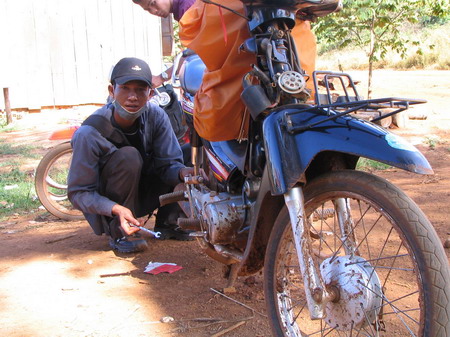

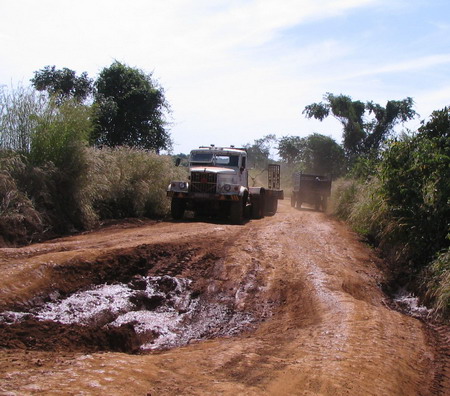


Longhouse in a one of the villages. We walk through the village. Few people are at home and we spend some time talking with children.



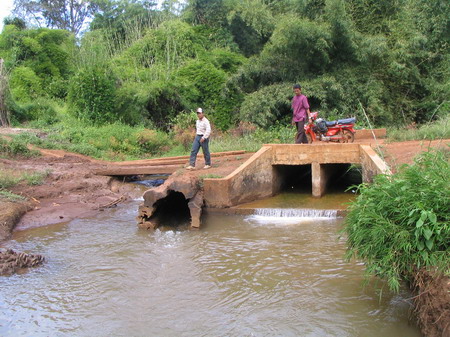
People have gotten stuck with this vehicle


Along the way we see a variety of butterflies.
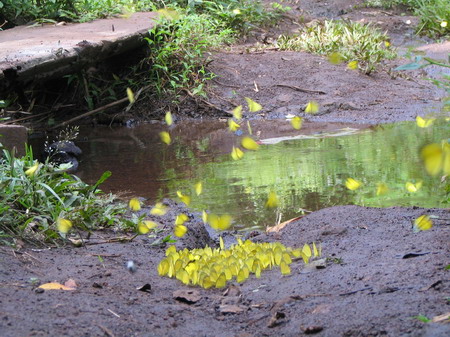

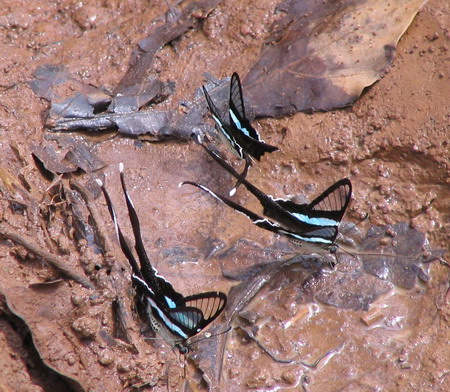
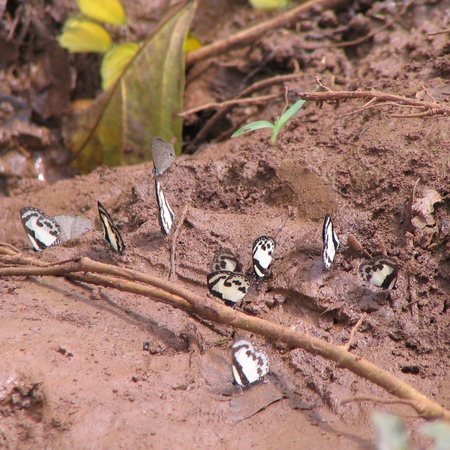
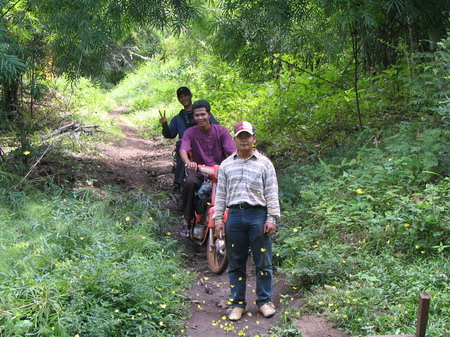

From the right: Lot, Lim and me.
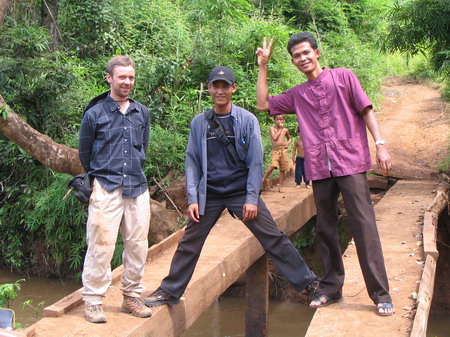
Then we reach this town the name of which I forgot. From here it is not far to the border with Vietnam.


We pass the village on the way to the Ou’Sean Lair Waterfall a few kilometers from here. The ‘road’ is getting more challenging while we come closer.
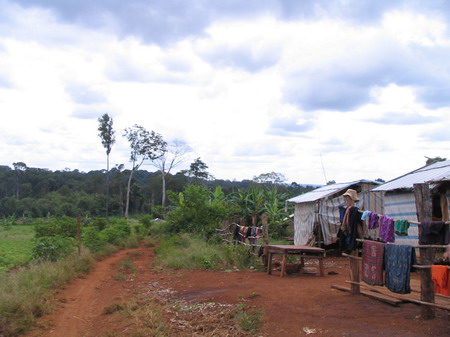
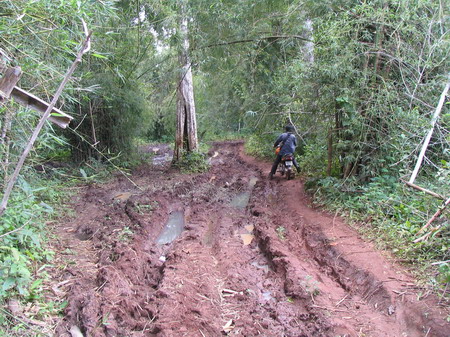
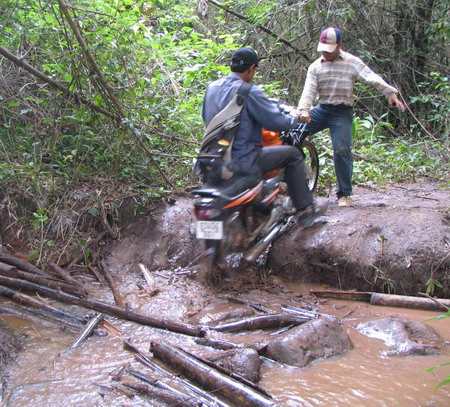
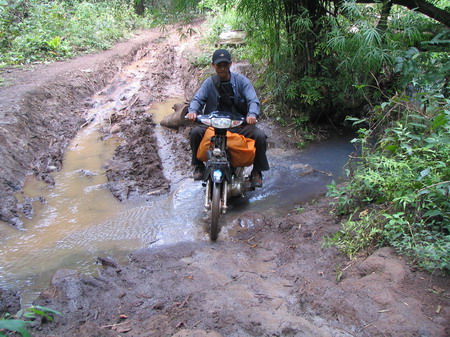
We reach the water falls and have a break. The same river falls over a succession of four or more waterfalls only a few dozen meters from one another. The falls and forest make for a very charming place. We go for a swim and eat some of the fruits we bought in the market in the morning.


Then we head back to the village.
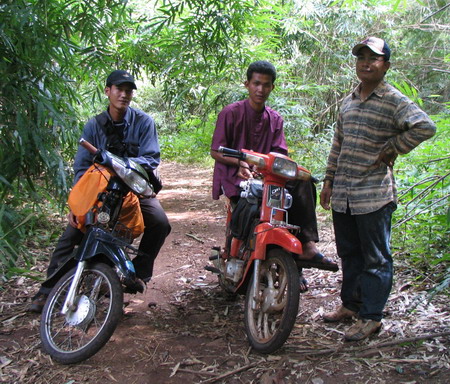

I learn that cockfighting is popular around here.
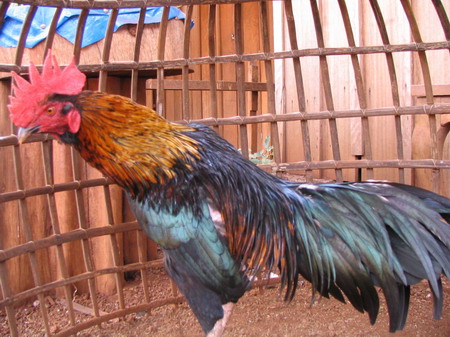
This is a Russian made vehicle that seems to be particularly popular in the northeast. Presumably they were important from Vietnam at some point. These vehicles were a common sight during my childhood in Eastern Germany with loads of Soviet forces around. However, back then I never saw one that seemed anywhere close to that state of disrepair, although the one here appears to be still in heavy use.
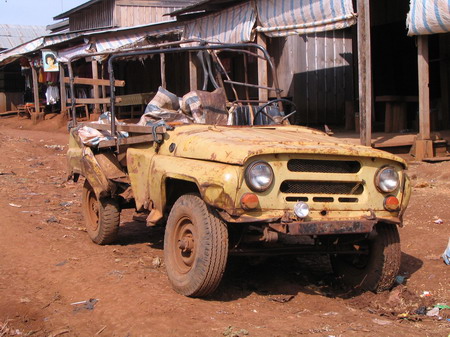
We have a seat in a restaurant and order coffee. The place is crowded with mostly male customers watching boxing on TV. Multiple TV sets show Thai and Khmer boxing respectively and observation indicates that a lot of betting is going on. Other patrons play pool in the shadow on the backside of the house.
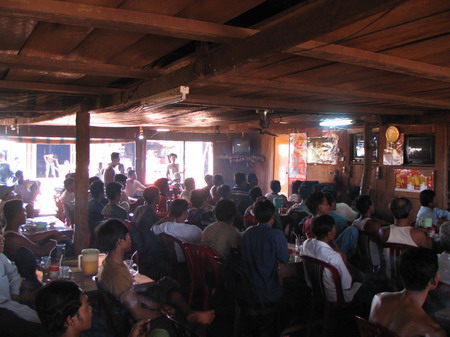
After a break we leave to visit the Bokeo mines area which is just a few minutes away from here. I learn that until recently this business was conducted by mostly poor and self-employed laborers, many of them ethnic Vietnamese. Few got lucky enough to make it worthwhile. With simple tools, deep holes are dug in the ground, oftentimes with only a small entry on top but chambers of considerable proportion underneath. These people work with little protection and take a marked risk as some of these chambers have collapsed and killed workers.
More recently the situation has changed with companies moving in and starting mining operations on a bigger scale, hardly to the benefit of local communities.
Along the road are bigger and smaller holes in the ground with heaps of red soil around from small scale mining.
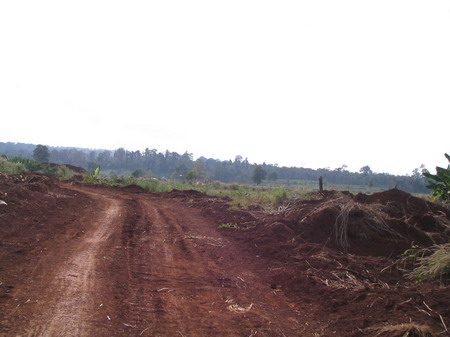

Bigger holes from bigger scale extraction.
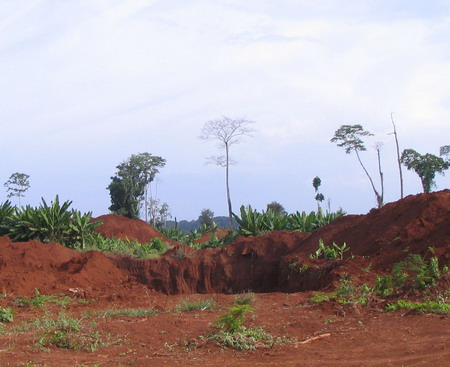

We stop and spend some time going through the soil, searching for gems but don’t get very lucky.
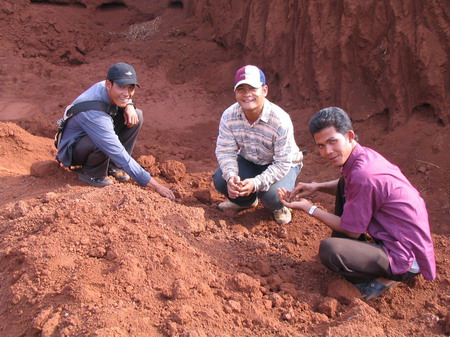
Lim and Lot.
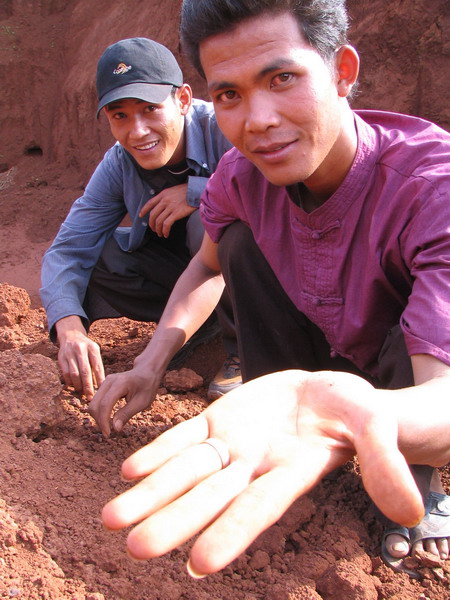
Phal got slightly luckier.
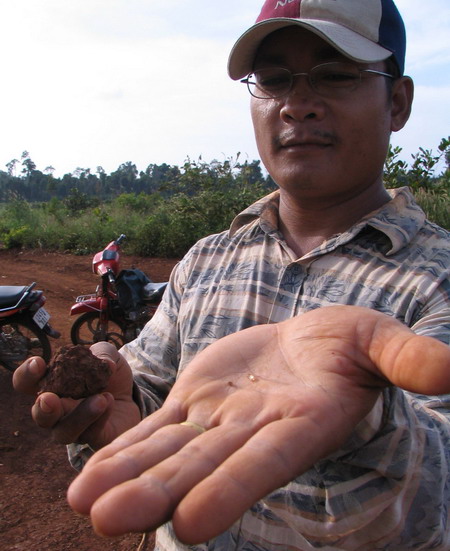

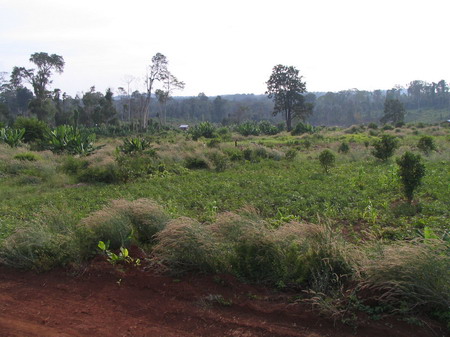
Mining equipment
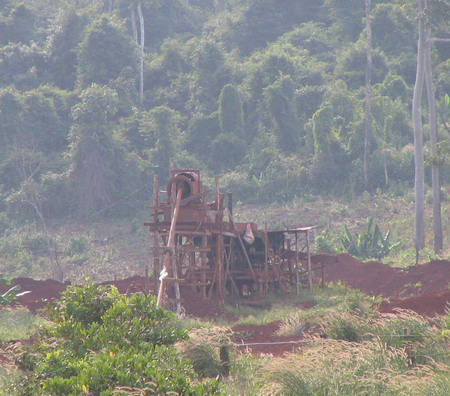
From here we follow a road to the west of the one on which we came, back to Banlung.
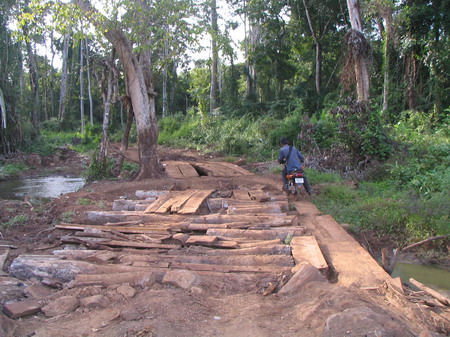
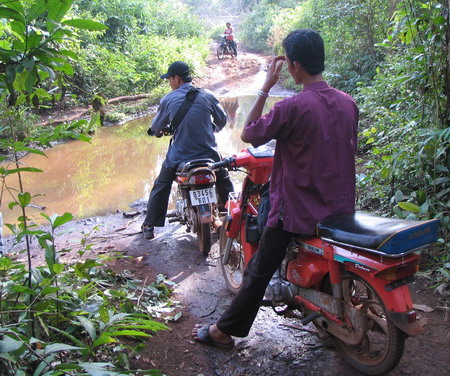
Locals manage a range of obstacles in the road with great ease and skill.
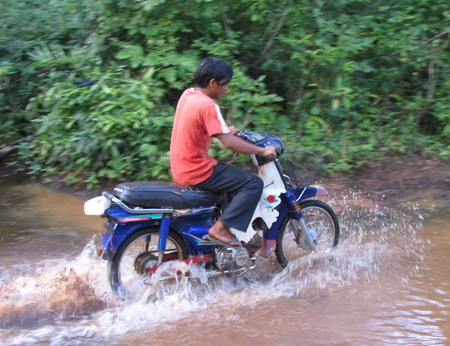
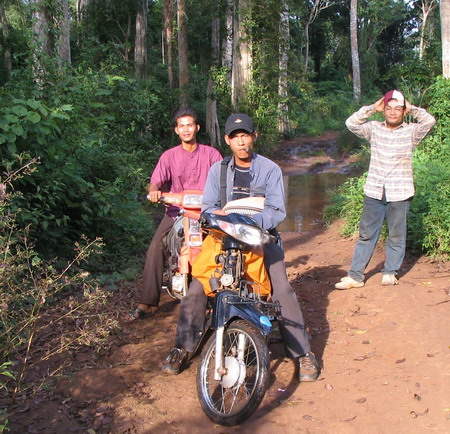
Occasionally we see uniformed and armed people.
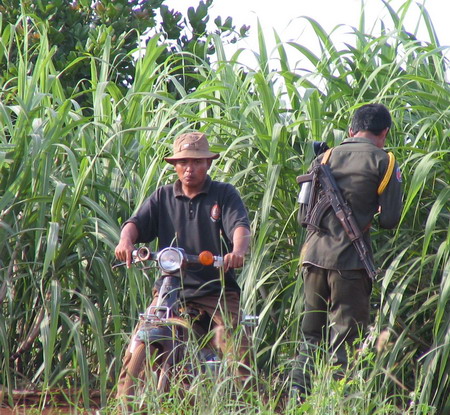
This is a cashew nut plantation, I believe.
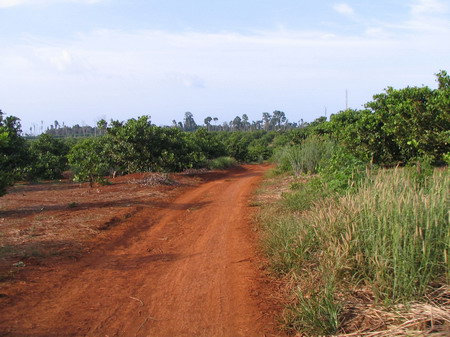
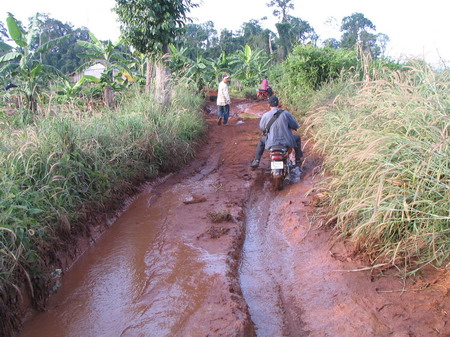
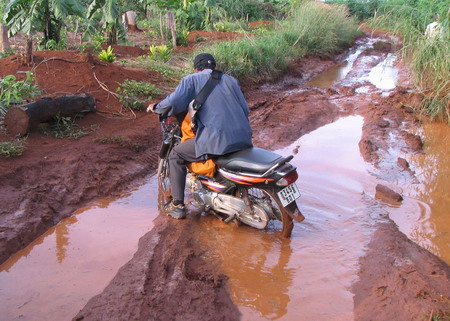

Great skill is also required to keep these vehicles running.
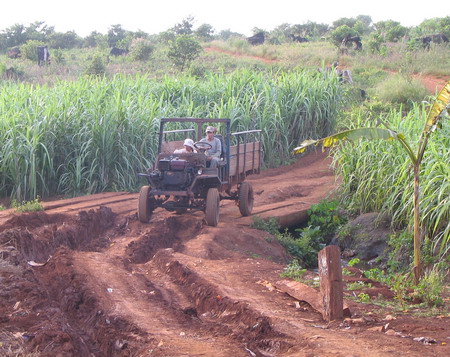

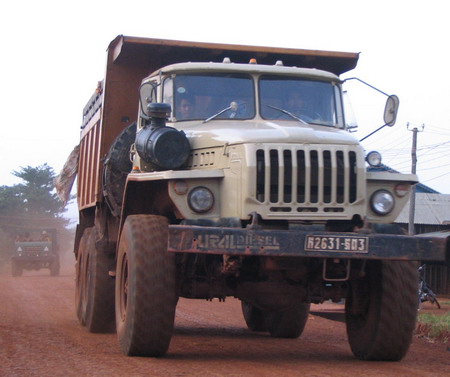
In the rubber plantation.
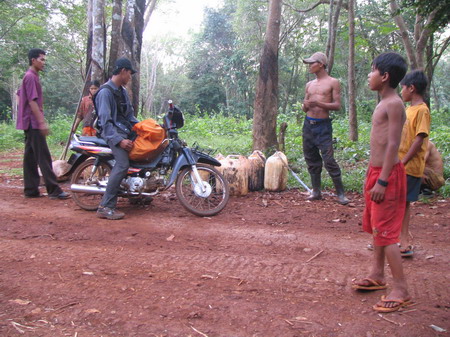
We learn how trees are cut and rubber is collected.

From here it is not far to Banlung. We reach when it is almost dark. Later we go to have diner and visit various places to taste rice wine and other local specialties before we go to bed.
In the morning, we meet Lim and Lot again and have breakfast together. Our flight is later in the morning and we spend the time until then purchasing traditional rice wine in jars and some stronger varieties in plastic bottles.
Lot and Phal with rice wine jar.

Banlung airport is a rather basic aviation facility. This is the check in and gate, the latter quite literally.

This is the aircraft.
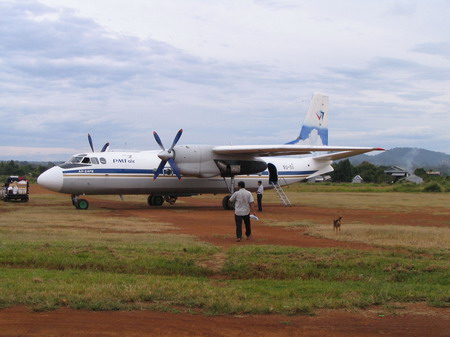
On numerous occasions during the few days in Rattanakiri I have observed new 4WD vehicles with the logo of the UN refuge agency UNHCR. The Cambodia observer will know that during recent years, many ethnic minority refugees from Vietnam have crossed the border to escape from discrimination and government crackdowns Vietnam’s central highlands. The fait of these people has become an issue of some discomfort in the relationship between UN and the Cambodian government which does not wish to displease its patron’s across the border. Most of the refugees who made it to Phnom Penh have been resettled in third, Western countries. More recently, groups of refugees under UNHCR protection have been resettled to Vietnam, partly against there will with ugly scenes in Phnom Penh involving refugees being beaten by police and soldiers and forcefully loaded on buses to Vietnam. This, obviously, has let also to argument between human rights organizations and the UNHCR.
The point of bringing this up here is that after most passengers have boarded the plane, two UNHCR vehicles arrive at the airstrip and about 15 people including children are rushed from the cars onto the aircraft. I assume these are refugees from Vietnam who have suffered persecution and whose destiny is uncertain.

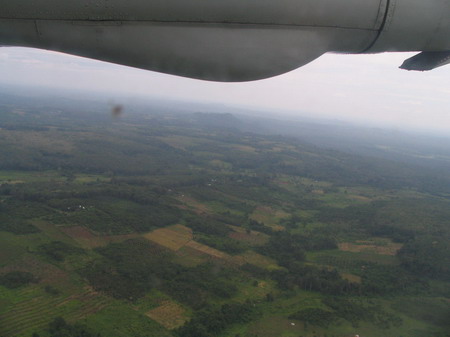


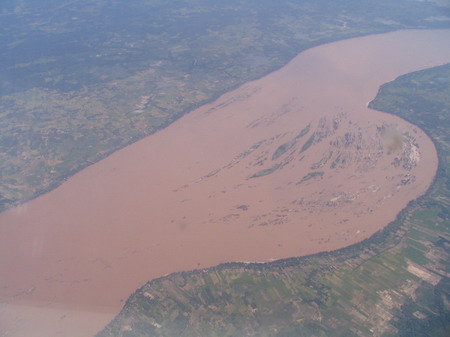
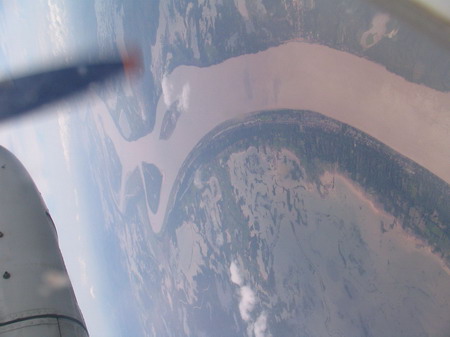
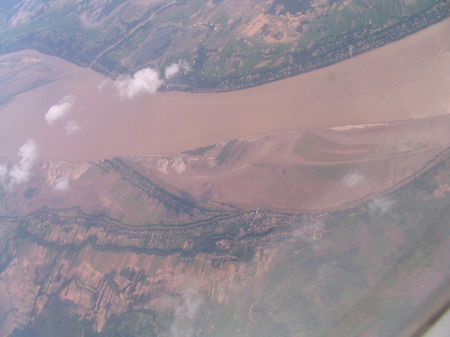
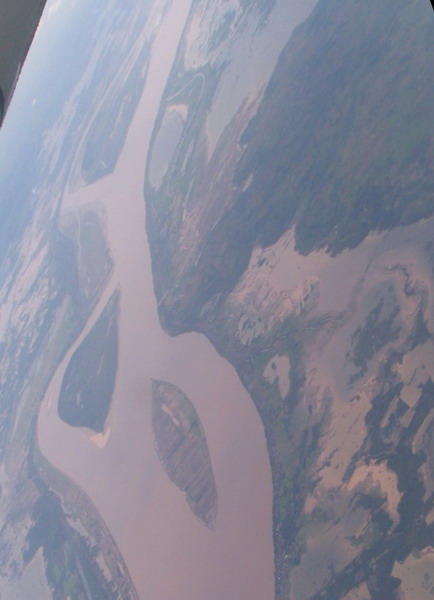
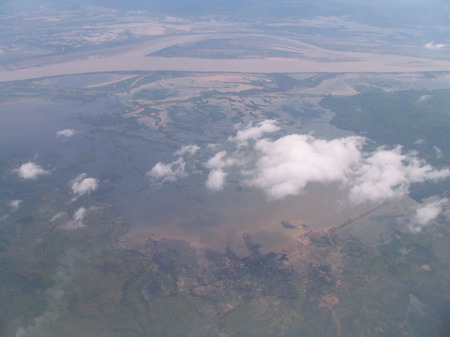
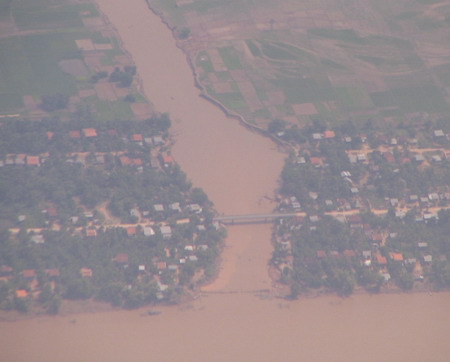

Go-Cart track just outside Phnom Penh.
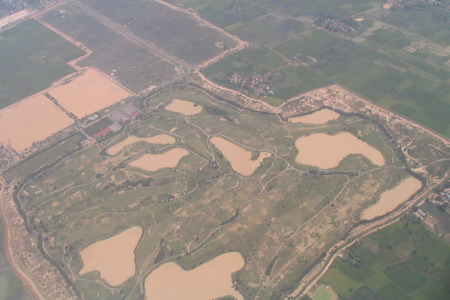
Rice fields.

A Buddhist Wat and a school next to it, close to Phnom Penh.

Hi Stefan,
lange nichts von mir gehört…
wollt einfach mal feedback geben…
Deine Seite ist echt super und ich schau immer mal wieder gerne bei Dir rein, wo Du Dich mal wieder so rumtreibst…
Ne Menge an ziemlich guten Fotos….
Beste Grüsse
Dietmar
Hi Dietmar,
gut von Dir zu hoeren und danke fuer die Schmeicheleien. Im Augenblick treib ich mich in Kanada rum. Wann sehen wir uns wieder in Kambodscha?
Stefan
Wow… Stefan, u’re really a great explorer. I feel like I’m joning your team to explore the wealthy jungle through the photos 😉
PS: I wish I could do as you whenever I return to Cambodia.
Wanna,
Bonjour Stefan,
It is very touching to read your writing and see all the photos about Rattanakiri and the airview fotos of the proximity of Phnom Penh,my home town,which are so familliar to me because I had flied in and out of P.P. so many times before the war. And I think that your 3 months’ stay in Cambodia has let you see more scenery than me in 30 years’ time.I want to say Bravo! young man!
Bye bye!
Samnang 2006/04/08 from Paris
Wanna,
so when are you planning to return to Cambodia? Maybe we meet up some day and explore the jungle together. Unfortunately this is more of a weekend activity for me most of the time, as my jobs tend to keep me in Phnom Penh.
Samnang,
great to hear from you again and thank you for your kind words. So you were at home in Phnom Penh, not Chhlong?
My initial stay in Cambodia was for 3 months but since then I returned twice, so have spend more than 12 months in the blessed country of Cambodia by now. I consider myself very privileged having the chance to travel around in Cambodia.
I hope that you will come to your home country again and then we could meet up either in Chhlong or Kratie.
Be well,
Stefan
Dear Stefan,
Inreply to your question,I would like to tell you that my grandfather and an uncle’s family always lived in Chhlong untill they were expeled from the big house in 1970.And my own family used to live in P.Penh. As you know the history of the Khmer Rouges, now I have no home on family neither in P.P. nor in Chhlong. Unlike you German people who are lucky enough to have an happy end in 1989. So I am still hesitating to go back to Cambodia. Oh! I donot know whether you haveread my postdated the 6th April 06 ?
And I find your travel log very interesting, so I decide to go thru it all, and I will tell you my impression after that. bye !
Samnang 2006/04/09 from Paris
Hi Stefan,
I’m to return to Cambodia in July. Hopefully, I could join your team to explore the remote area with you. I really like it.
As you know, Cambodians seem not like travelling/exploring in deep jungle. But for me, it’s the exceptional case. I think I should ask you to be my guide *lol* . We’ll explore Cambodia together in our possible free time.
Wanna,
Samnang,
always my great pleasure to read from you. You are very right, history has treated Germans well, in strong contrast to Cambodia. It is so sad that you lost your home and homeland along with many family members during the Cambodian holocaust, and I can see that it makes you hesitant to return to or visit Cambodia. I did read all your messages and will respond shortly.
Meanwhile, be well, and Happy Khmer New Year to Paris!
Wanna,
I should have mentioned that I have little hope to return to Cambodia prior to spring 2007, much to my frustration. You are right, most Cambodian seem hesitant to explore the jungle. In fact I found striking most Khmers seem to have an ambivalent relationship to the jungle and can never be at ease alone in the forest.
Having said that, I would very much like to join you and some trips and we can serve as each others guides.
Happy Khmer New Year to you, too, obviously!
Hi Stefan,
It is a great log and you have some wonderful, inspiring pictures. It seems like you went into the heart of Srok Khmer, traveling through jungle and uneasy road conditions. I admire your exploration; I plan to travel to Rantanakiri Province on my next visit as well. I have returned to Cambodia twice since I came to the US. Much memories came around in viewing your pictures …
Angel
Hi Angel,
Thanks for kind words. Make sure to visit Ratanakiri, it will be a very rewarding trip. Maybe we meet there or somewhere else in the land of the Khmer one day. Actually Ratanakiri is not exactly Srok Khmer, as the majority of the population is not Khmer, ethnically.
Best,
Stefan
Hi Stefan,
ratanakiri is great!! please visit Lot en Lims website http://www.navigatecambodia.com and tell everybody they are great guides!!!
Ivonne, great, thanks for this information. I had not seen their website and I am really impressed. I keep advising people to ask for Lim and Lot when looking for guides in Rattanakiri.
Hi Stefan,
is it possible to use some of your photos to upgrade Lot and Lims website?
Rgrds, ivonne
Hi Ivonne,
Sure, no problem, just use them. If you require higher resolution images, just let me know the name/number of the file. It would be nice if you could indicate my name as photographer but is not essential.
Stefan
Great photography!! Thank you for sharing. Many of those pix in the forest could have been taken in rural southern Georgia and north Florida USA. I have spent hundreds of hours on dirt bikes on those roads — great fun.
I am determined to visit Cambodia by the end of 09 and thanks to you I am really looking foreward to it.
Hello.
You have some great photos. I was wondering if I could use the one of the Cambodian cock. I’m building a website on gamefowl and good photos are hard to come by. I’d give you full credit, just let me know how to list you. Thanks.
Doug
hello
u have alot of great photos that i naver know, thanks
great photos
i thought these are motorcross trip, but i didn’t see any motor cross. it just normal motor.
i think if motor cross it will be nice….
i really like it. Actually, they are really nice picture and trip. i do wanna be like that too
Hey Ivonne,
This is Ram from University of Tokyo, Japan.
I am working on Cambodian forest using remote sensing technology for REDD policies implementation.
Could you share more information about forest, chasew plantation in cambodia.
Do you have some more areal photograph of forest.
Kindly share the pictures
Looking forward for positive reply
Thanking you
With Regards
Ram
Hi Ram,
Unfortunately I think that Ivonne has no way of reading your message and even more unfortunate, I have no email contact for her and the web site she mentioned in an earlier comment appears to have been down for a long time.
There are a good number of organizations in Cambodia working on forest, so it should be easy to find information on this. Try CBNREM Learning Institute or CDRI for a start. I think they might be able to help you out with aerial photos, too.
World Bank and ADB have both supported the sector and I would expect aerial photos and proper analysis in their reports, too.
Best,
Stefan